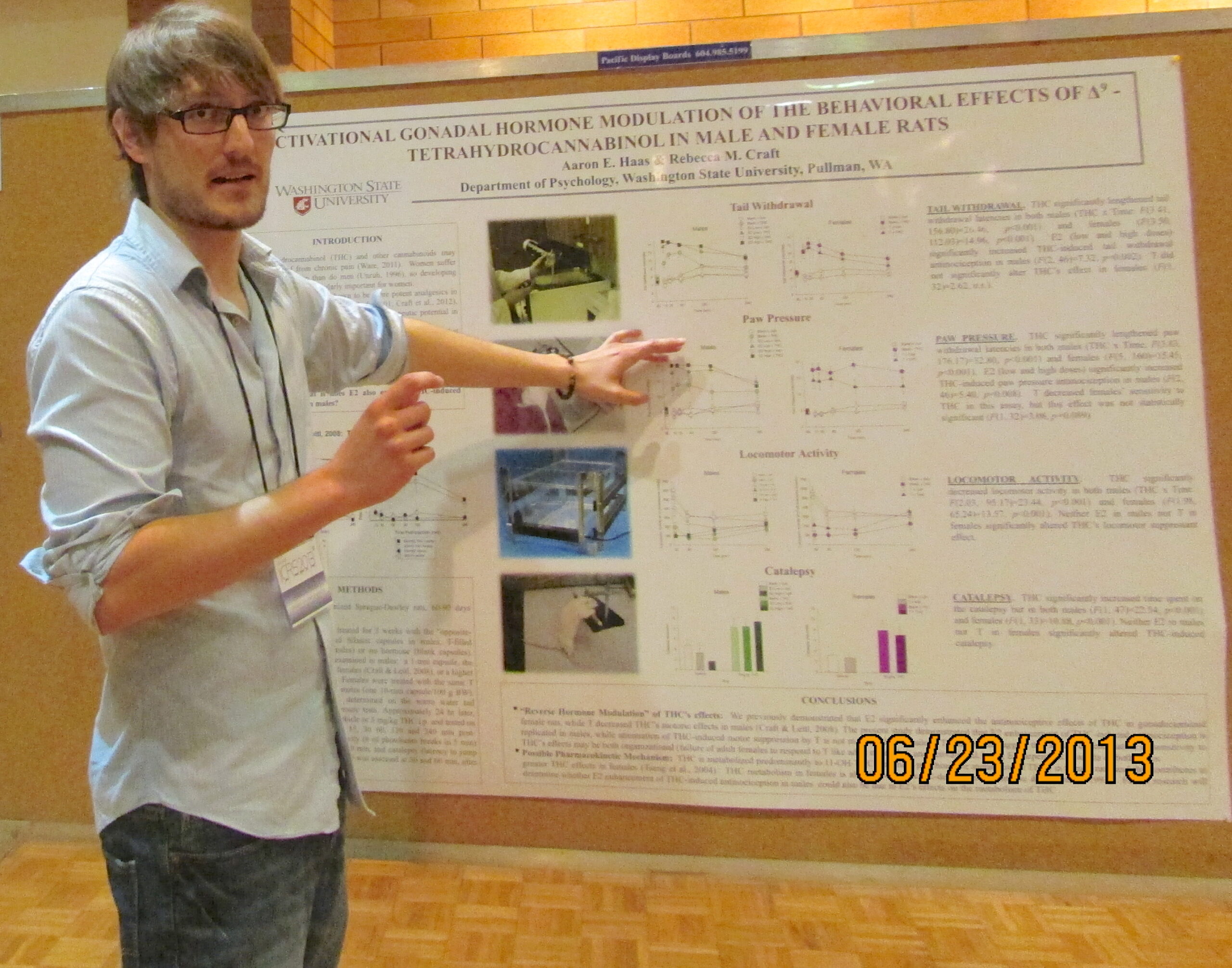by Fred Gardner Vancouver, BC, June 25 2013
There are measurable differences in the way males and females produce and respond to cannabinoids. Several presentations at the 2013 ICRS meeting described gender distinctions at the test-animal level.
Cannabinoids are more potent analgesics in female rats than in male rats. Rebecca Craft and MD Leitl reported in 2008 that the sex hormone estradiol enhances the analgesic effects of THC in females whose ovaries had been removed, whereas testosterone blocks the motion-reducing effects of THC in males. At this year’s meeting Aaron Haas, a postdoc in Craft’s lab at Washington State University, presented a poster showing that estradiol increases sensitivity to THC’s anti-pain effects, but testosterone does not.
A team of Israeli researchers led by Sharon Anavi-Goffer found a marked difference in the way male and female mice respond to postnatal administration of HU-267, a cannabinoid drug developed by co-author Raphael Mechoulam. (“HU” stands for “Hebrew University.”) HU-267 is described as “a novel synthetic compound whose structure resembles that of ajulemic acid.” The researchers gave the drug to mice of both sexes 24 hours after birth. They found that by 20 weeks of age, the females were “ambulating” and “rearing” (ADHD-like symptoms) at almost double the rate of the controls.
Here’s the kicker: “the behaviour of the male mice… was not affected by HU-267.” Now the researchers’ goal is to figure out why the devil this drug only exerted a visible effect on females.
PS April 25 2014 Anavi-Goffer says related studies are being conducted and she hopes to have results to report by late summer.





